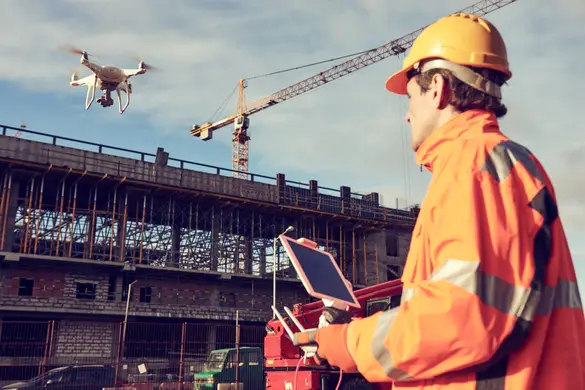
There are several steps in the licensing processes for commercial drones. Many business owners explore and utilize drones in various ways such as filmmaking, real estate, and agricultural uses. However, there are many rules and regulations set by the FAA that govern the use of drones for leisure and for commercial business. As a business owner, follow the drone licensing process to ensure the knowledgeability of your pilots as well as avoid legal and financial repercussions. Read on to discover five steps in the commercial drone licensing process.
Choose A Drone Type
Choosing a drone type is often the first step in the drone licensing journey. However, this is a big decision that shapes the rest of the process going forward. Many prospective drone operators decide between cheaper models to establish skills, or higher-end models from reputable manufacturers. Choosing a cheap model often negatively impacts your perception of drone photos and videos, due to their cheaper cameras. Additionally, cheap drones sometimes lack certain sensors and safety features that may make them harder to fly than a higher-quality counterpart. Therefore, start with an entry level drone from a legitimate, reputable manufacturer to ensure camera and flight quality. Surely, choosing a drone type has a significant impact on the rest of the licensing process as well as business help.
License Requirements
Second, familiarize yourself with the license requirements set by the FAA. There are several that must be met before being considered for a license. To become a drone pilot, you must be at least 16 years old as well as be able to read, speak, write, and understand English. Additionally, you must be in a stable physical and mental condition in which you can safely navigate a drone. Finally, you must take and pass an initial aeronautical knowledge exam. Absolutely, knowing the requirements for license applications saves time by avoiding mistakes.
Secure A Unique FTN
Securing a unique FAA tracking number (FTN) is a recently added step to the process. It allows the FAA to keep track of applicants for certification in a more efficient manner. Once you’ve been assigned an FTN, it stays yours for your entire aviation career, including future licenses and certifications. To get one, sign up on the Integrated Airman Certification and Rating Application website. You’ll be assigned an FTN shortly after. Ensure you remember your FTN by writing it down, because it’s needed later in the process. Certainly, obtaining a unique FTN enables the FAA to track your application process and status more efficiently.
Register Your Drone
Registering your drone is the next step in the licensing process. As soon as you get a drone, weigh it. If it’s more than 0.55 pounds, it needs to be registered with the FAA before it can be flown. Additionally, most camera drones on the drone market need to be registered, regardless of their weight. The registration process is quick, simple, and cheap. For a $5 fee, fill out some personal details and drone details on the FAA’s DroneZone website. You’ll get an email with a registration number upon successful registration. Now, you need to visibly mark your drone with this registration number. This can be done simply with a marker, but the number must be reasonably visible upon visual inspection. Definitely, registering your drone with the FAA reduces costs by complying with federal laws.
Take The Licensing Exam
Taking the actual licensing exam is the final step in the drone licensing process. It is also the most difficult, since two thirds of it are identical to the aeronautical knowledge exams plane pilots take. In fact, most people need to take the exam several times before passing. The exam costs $150 each attempt, and you’re required to wait two weeks between attempts. Additionally, the FAA provides a study guide, but many online classes and videos provide better resources for preparation. Utilize these resources and study more than you need to so you secure your license. Of course, taking the licensing exam legitimizes your drone license and your status as a drone operator.
There are many steps to obtaining a commercial drone license. One first step is to choose a drone type to practice on. Second, knowing the license requirements avoids mistakes and therefore reduces losses. Third, obtaining an FTN unique to your aviation career enables the FAA to track your license and skills assessment more efficiently. Registering your drone with the FAA increases your compliance with federal laws, further reducing costs. Finally, take the actual licensing exam to secure your license and status as commercial drone operator. When wondering about the steps in the commercial drone licensing process, consider the steps described above.
 Business First Family Business, Accounting, Finance, Investing, Marketing And Management
Business First Family Business, Accounting, Finance, Investing, Marketing And Management